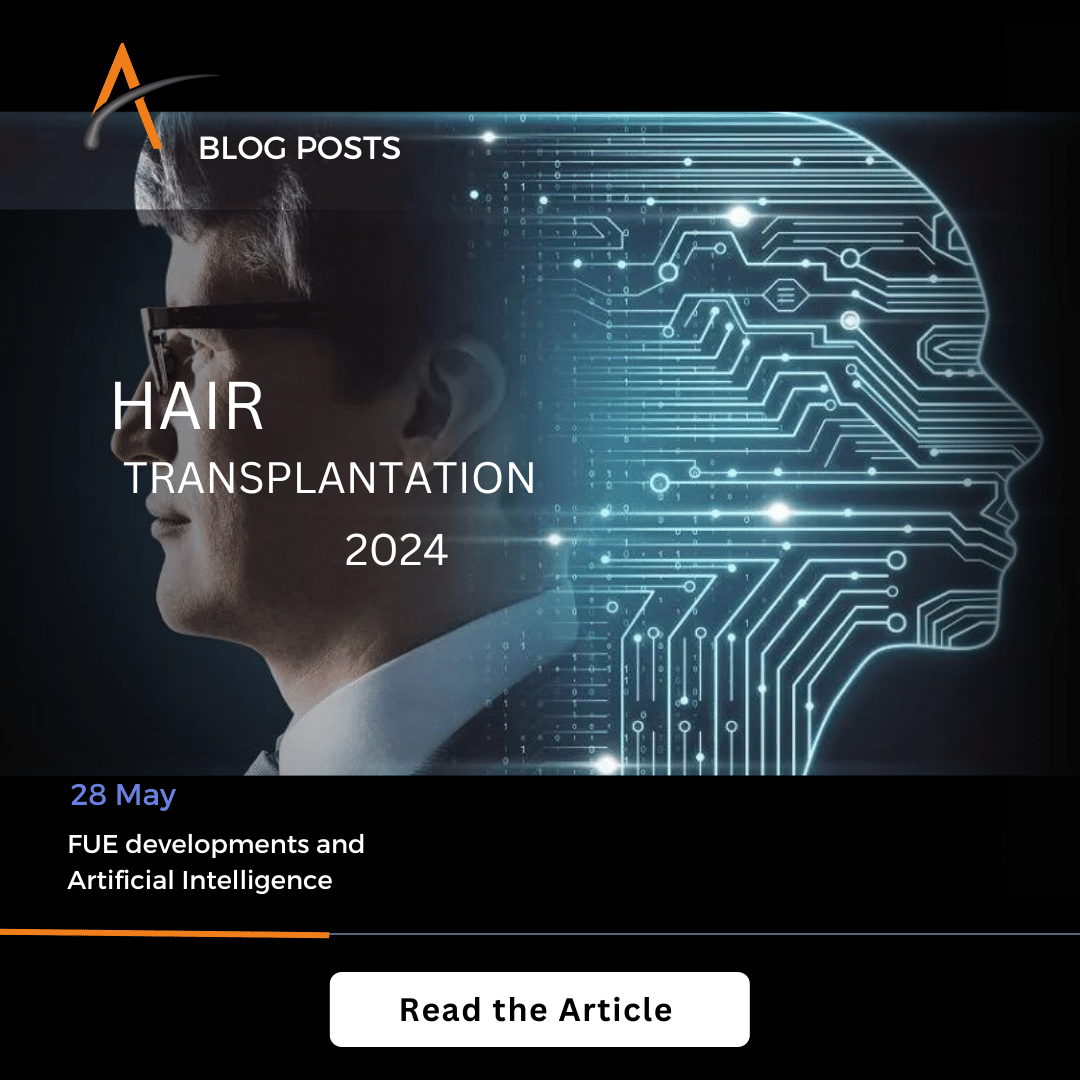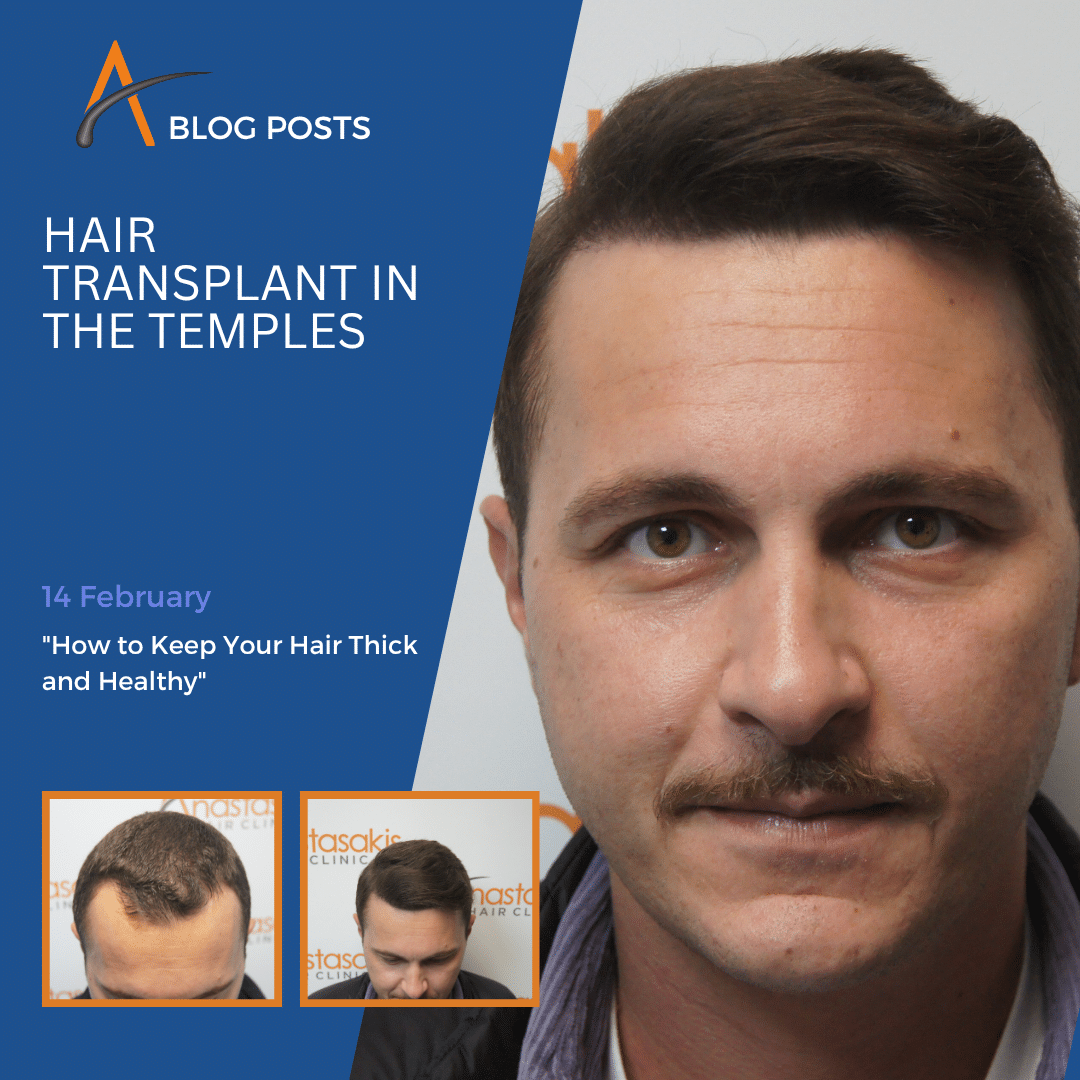Hair loss and thinning concern many people as they age, especially after 50, when androgenetic alopecia becomes more pronounced. However, modern medicine, through hair transplantation after 50 or even earlier—particularly using the FUE hair transplant method—offers solutions that can restore hair density and appearance, regardless of age.
At Anastasakis Hair Clinic, a center with extensive experience and specialized doctors, we believe it’s never too late to transform your hair and regain your lost confidence through a successful hair transplant after 50.
Age and Hair Transplantation: Myths and Facts
The notion that hair transplantation is an exclusive privilege of younger individuals is a widely held but incorrect myth. Experience and modern clinical studies show that men over 50 who are suitable candidates for hair transplantation after 50 can not only safely and successfully undergo the procedure but, in many cases, are actually ideal candidates.
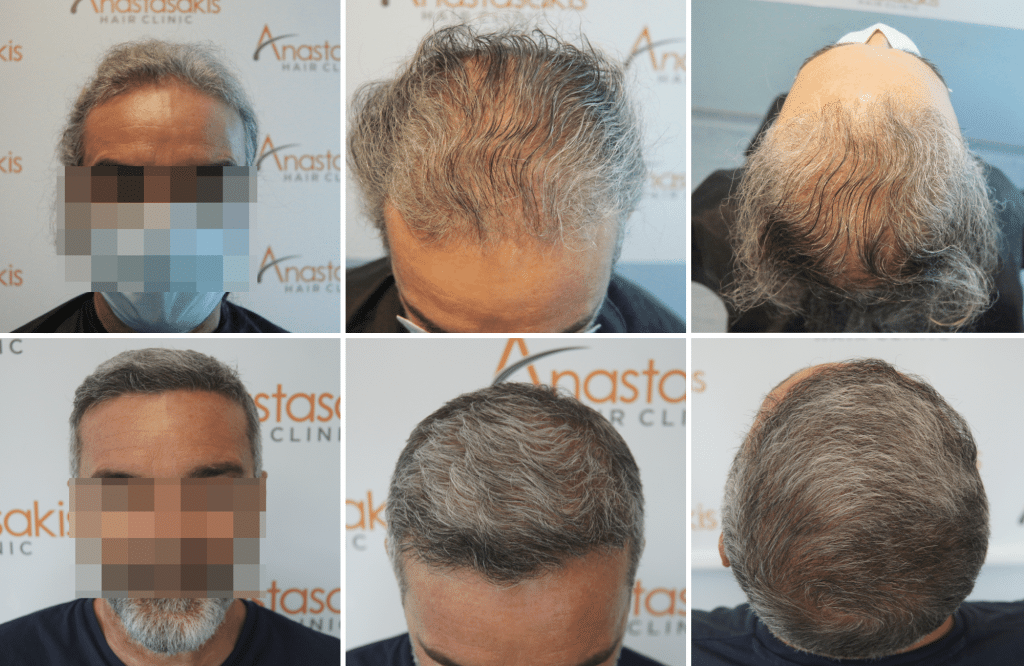
According to the International Society of Hair Restoration Surgery (ISHRS), men over 50 who choose to undergo hair transplantation can expect excellent results from the procedure.
The main reason that makes individuals over 50 ideal candidates for hair transplantation is that they typically experience stabilized hair loss or androgenetic alopecia, which makes the planning of the hair transplant more predictable and effective.
The Importance of Hair Loss Stability and the Donor Area
As we age, the progression of androgenetic alopecia (the most common cause of male hair loss) slows down or stabilizes. This means that in patients aged 50 and over, hair loss has reached a more predictable stage. In fact, according to Dr. Anastasakis, men experiencing hair loss who are over 45-50 years old are theoretically ideal candidates for hair transplantation, as by this age, alopecia is generally stabilized and significant deterioration is not expected in the future.
For the specialized surgeon, this stability is a valuable asset, allowing for more precise planning of the hair transplant strategy, knowing that the existing hair growth is unlikely to change significantly moving forward.
Is Hair Transplantation After 50 Safe?
The safety of hair transplantation after 50 depends on the medical evaluation of the candidate and proper preparation. Modern techniques, such as FUE (Follicular Unit Extraction) and FUT (Follicular Unit Transplantation), are extremely safe and effective for patients over 50. Hair transplantation does not require hospitalization, and recovery is quick, allowing patients to return to their daily activities promptly.
Benefits of Hair Transplantation After 50
Since appearance remains important at every age, hair transplantation after 50 offers men not only a refreshed and rejuvenated look but also a significant boost in confidence and overall quality of life.
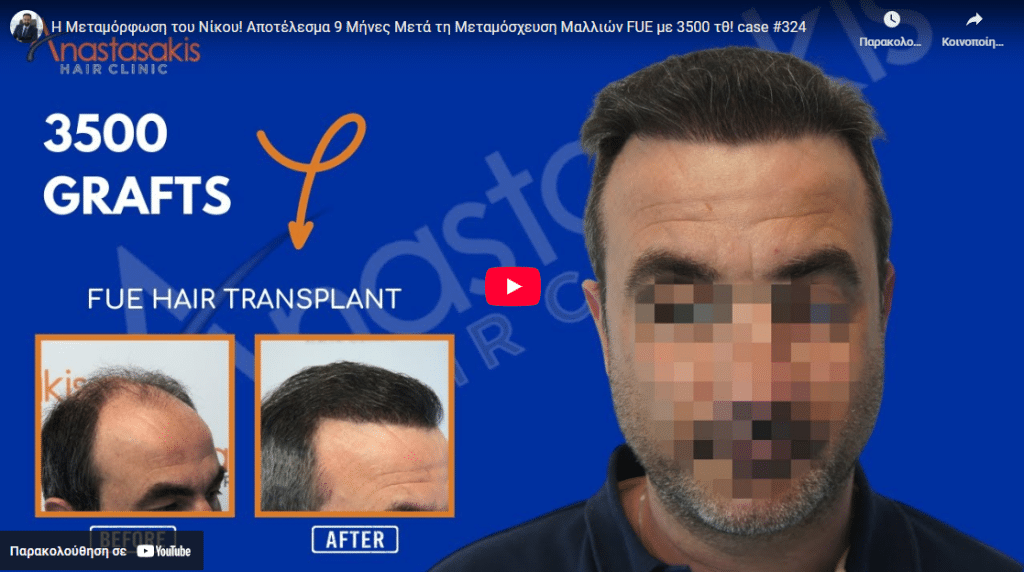
Key Benefits of Hair Transplantation After 50
The main advantages of undergoing a hair transplant after the age of 50 include:
- Permanent Results: The grafts are taken from areas of the scalp that are resistant to hair loss, ensuring long-lasting outcomes.
- Rejuvenated Appearance: Restoring hair density contributes to a more youthful and refreshed look.
- Boosted Self-Esteem: The improvement in hair density has a positive impact on self-image and mental well-being..
Psychological Benefits of Hair Transplantation After 50
Η αποκατάσταση των μαλλιών σε μεγαλύτερη ηλικία συνδέεται στενά με την ανανέωση της αυτοεικόνας και της ψυχικής ευεξίας. Restoring hair later in life is closely linked to improved self-image and overall mental well-being. Men over 50—whether still active in their professional careers or enjoying retirement—often find that their renewed appearance:
- Boosts their self-confidence
- Enhances their social interactions
- Rekindles their motivation for activities and social engagement
Many patients report feeling “younger” not just externally, but internally as well—an effect that positively influences their overall quality of life. After undergoing a hair transplant, it’s not uncommon for individuals to begin taking better care of their health, body, and personal appearance.
While a successful hair transplant with a completely natural result may not make someone look 20 again, it certainly helps turn back the clock a few years.
When to Choose Hair Transplantation After 50
The truth is, there is no upper age limit for undergoing a hair transplant—even individuals over 60 can achieve successful results, provided certain conditions are met
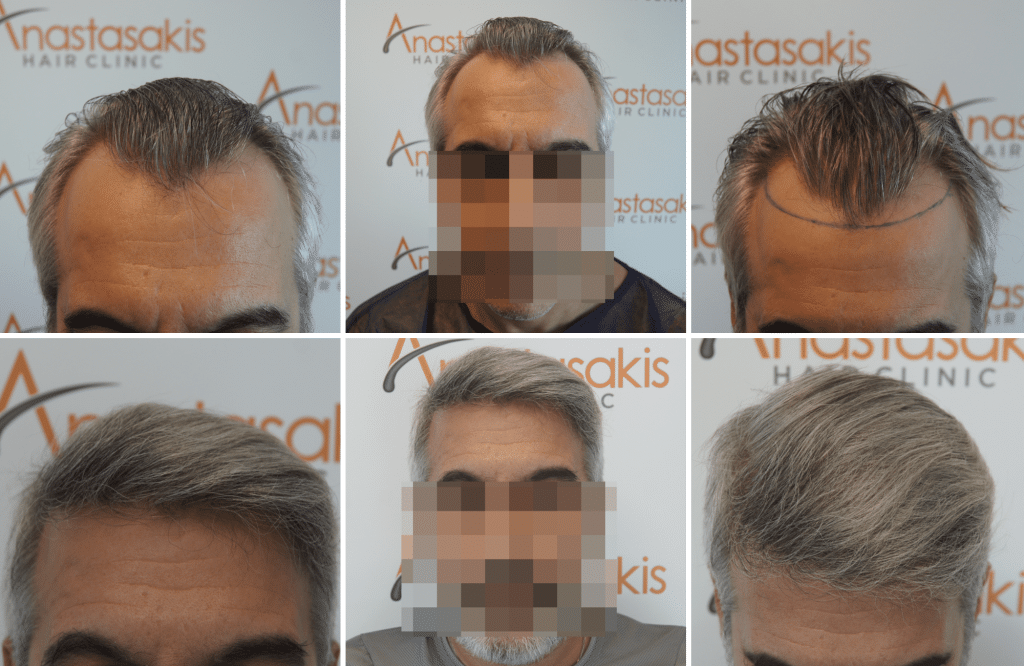
Factors to Consider Before Undergoing a Hair Transplant After 50
There are specific factors that must be carefully evaluated before proceeding with a hair transplant after the age of 50. These can significantly influence the final outcome of the procedure
- Quality and Density of the Donor Area
The condition of the donor area—typically the hair on the back and sides of the head, where grafts are harvested—is perhaps the most critical factor in determining the success of a hair transplant.
Many individuals over 50 still maintain sufficient donor density. The higher the density and the better the hair characteristics (e.g., thickness, texture), the more suitable the candidate and the greater the achievable density in the transplanted area.
Conversely, a very sparse or weak donor area limits the number of viable grafts, thus affecting the coverage that can be achieved. In such cases, the doctor may recommend a more conservative approach or explore alternative solutions, such as treatments aimed at strengthening existing hair.
- Overall Health Condition
The general health of the patient is always a top priority before any surgical procedure. Some individuals over 50 may have chronic conditions (e.g., hypertension, diabetes) or be on medication, but as long as these conditions are well-managed and the patient is in overall good health, age alone is not a barrier.
Hair transplantation is performed under local anesthesia and is minimally invasive, making it safe even for older patients. Your physician will take a full medical history and may request additional tests to ensure no underlying conditions—such as severe blood clotting disorders or advanced cardiovascular disease—pose a risk.
Fortunately, such contraindications are rare. Most healthy individuals in their 50s or 60s can safely proceed with the procedure after medical clearance.
- Realistic Expectations
A key factor for a successful outcome is having realistic expectations that align with what the procedure can actually deliver. After the age of 50, hair thinning may be more advanced and the donor area more limited. This means the transplant will provide visible improvement and increased density—but may not restore the thick hair someone had in their 20s.
An experienced surgeon will discuss the likely results with honesty and help you set priorities (e.g., focusing on the hairline versus the crown). Open communication helps ensure your goals are aligned with realistic outcomes, minimizing the risk of future disappointment.
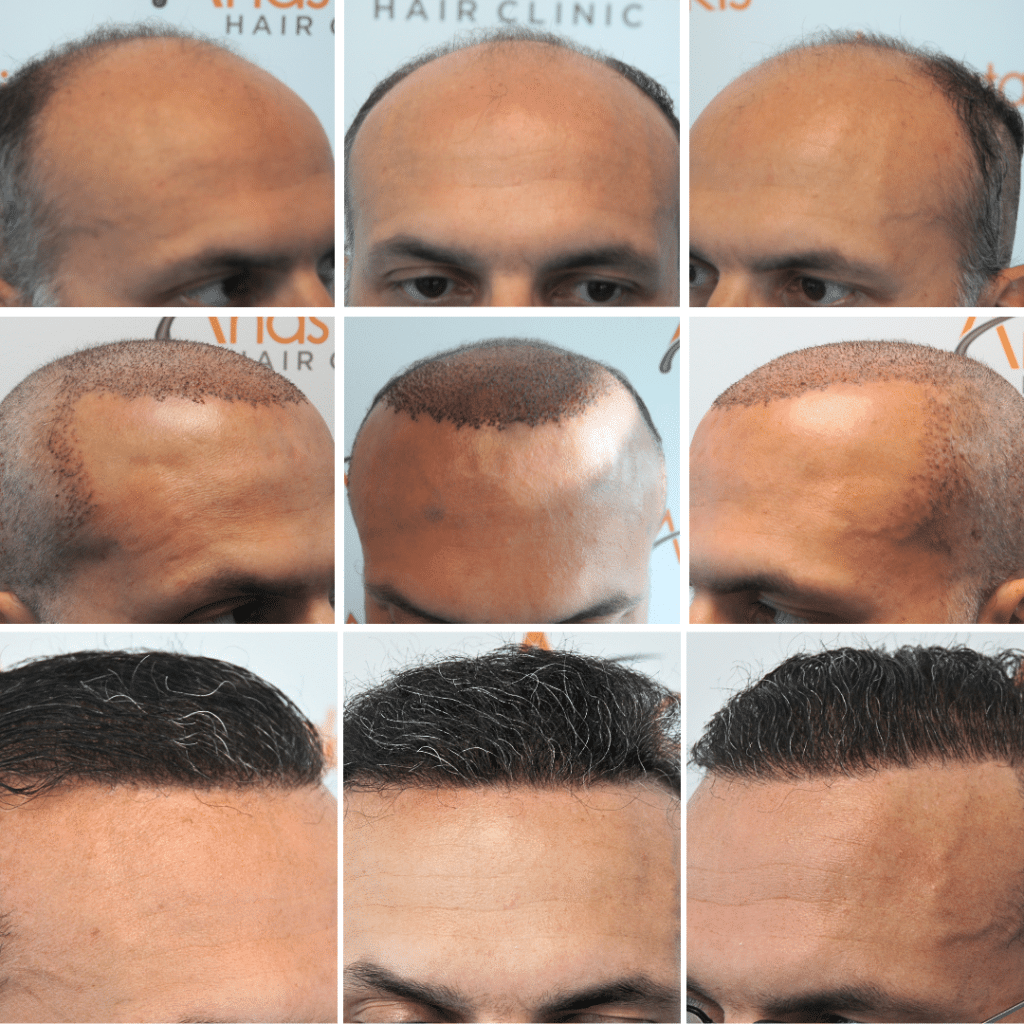
Fortunately, most mature patients usually have more realistic expectations — even partial restoration can significantly satisfy them, as it provides an improved appearance and boosted self-confidence.
For example, it has been observed that a subtle “filling in” of a very thinning crown may be considered a success by an older patient, even though the doctor might describe it as a moderate result. The key lies in proper guidance and clear explanations from the physician, so that expectations align with what is achievable and every patient is satisfied with the final outcome.
- Predictability of Alopecia
An advantage for hair transplant candidates at an older age is that their androgenetic alopecia has usually already revealed its full extent. At 50 and above, hair loss typically progresses very slowly — or may have even stopped — compared to the rapid deterioration often seen in younger men.
This allows the surgeon to predict the pattern of thinning with considerable accuracy and to design the hair transplant taking into account not only the existing thinning areas but also any potential future progression.
In individuals aged 25–35, hair loss is often unpredictable, which is why a more conservative approach is recommended until the final extent of alopecia becomes clearer. In contrast, at 50+, with a clear picture of how much hair has been lost and how much remains, the doctor can develop a long-term hair transplant plan that effectively addresses today’s needs while preserving a natural look for the future.
- Technological Support and Personalized Hair Transplant Planning
Modern hair transplantation makes full use of the latest technologies and personalized design techniques, which is particularly important for older patients who may require more careful planning. Techniques such as FUE and FUT are performed with the aid of high-precision and magnification tools, ensuring that the extraction and implantation of hair follicles are carried out with maximum safety and effectiveness.
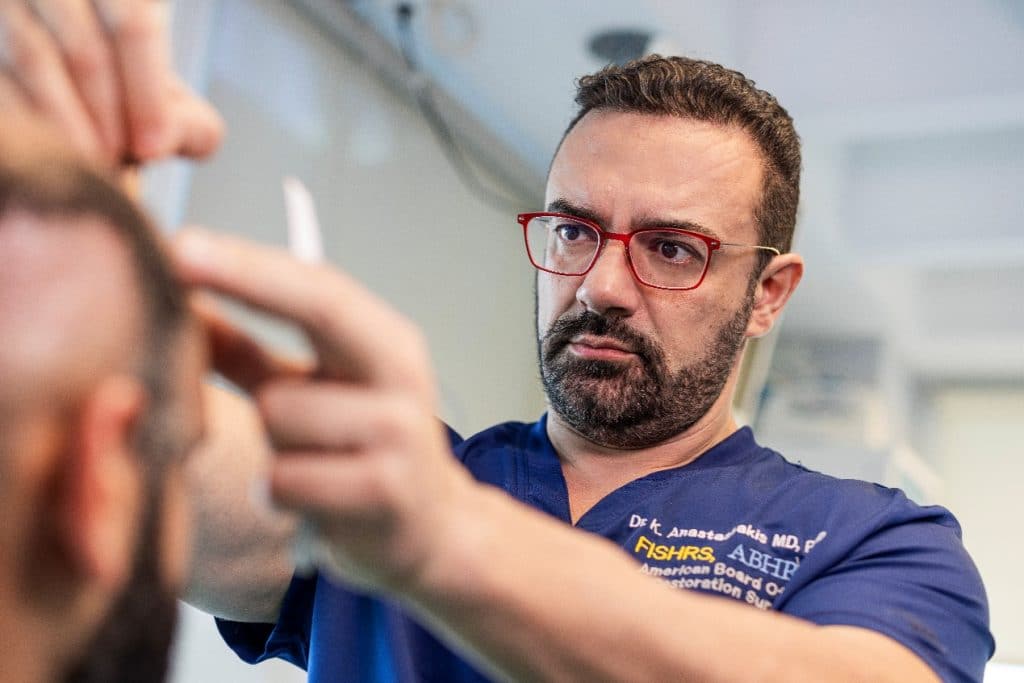
At the same time, every treatment plan is tailored to the individual: the surgeon carefully considers the patient’s age, facial features and proportions, hair quality, and aesthetic preferences in order to design a new hairline and graft distribution that looks completely natural and harmoniously suited to the person.
Experience at Anastasakis Hair Clinic
Anastasakis Hair Clinic brings years of expertise in hair transplantation, offering personalized solutions tailored to the unique needs of each patient. With a deep specialization in hair restoration, we leverage the biological maturity of patients over 50 and combine it with advanced scalp restoration techniques—such as FUE (Follicular Unit Extraction) and follicular unit graft implantation—to deliver customized treatments with guaranteed natural-looking results.
Age is not a limitation—in fact, it can be an advantage in the hair transplant process. The stabilized pattern of androgenetic alopecia, more realistic expectations, and the positive psychological impact make individuals over 50 excellent candidates for a successful and natural hair transplant.
With careful planning of both the donor and recipient areas, the procedure can not only transform one’s appearance but also significantly boost self-confidence and quality of life
Your Second Youth Starts with Your Hair – Book a Free Consultation
At Anastasakis Hair Clinic, we’re here to guide you through every step of the process, offering fully personalized solutions tailored to your needs.Contact us today to schedule your free consultation and discover how you can restore your hair with the natural, safe, and long-lasting results of a hair transplant—performed under the supervision of a highly specialized surgeon (MD, PhD, FISHRS) at one of Greece’s leading hair restoration clinics.







